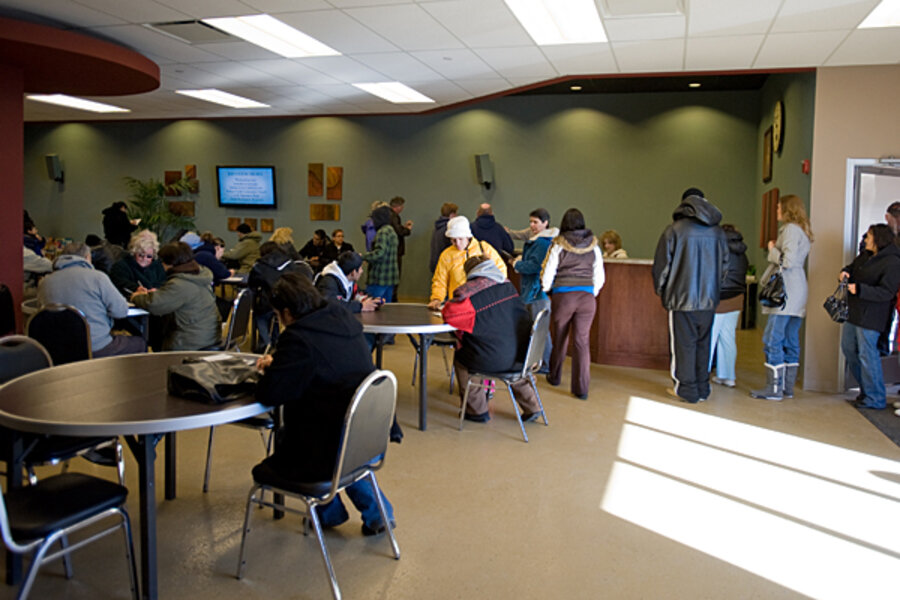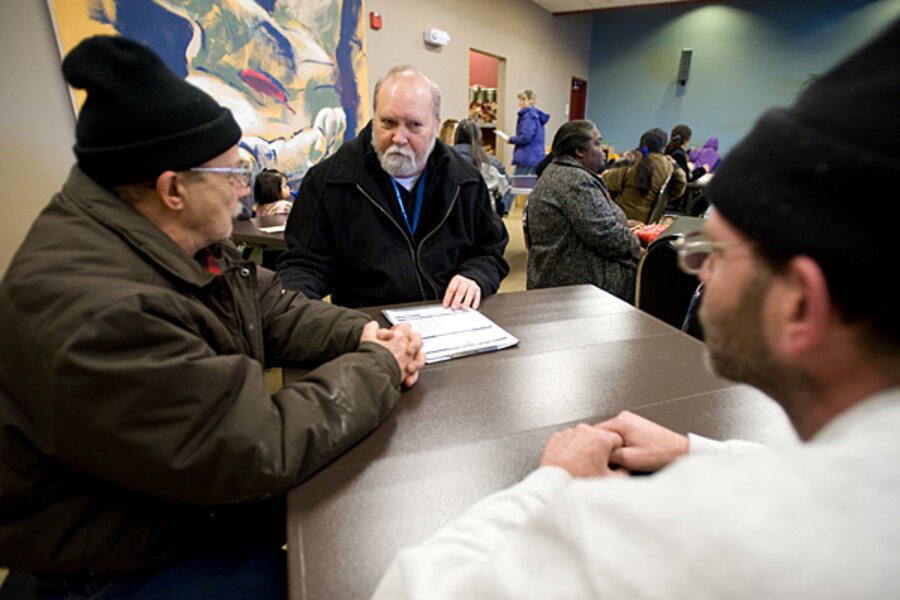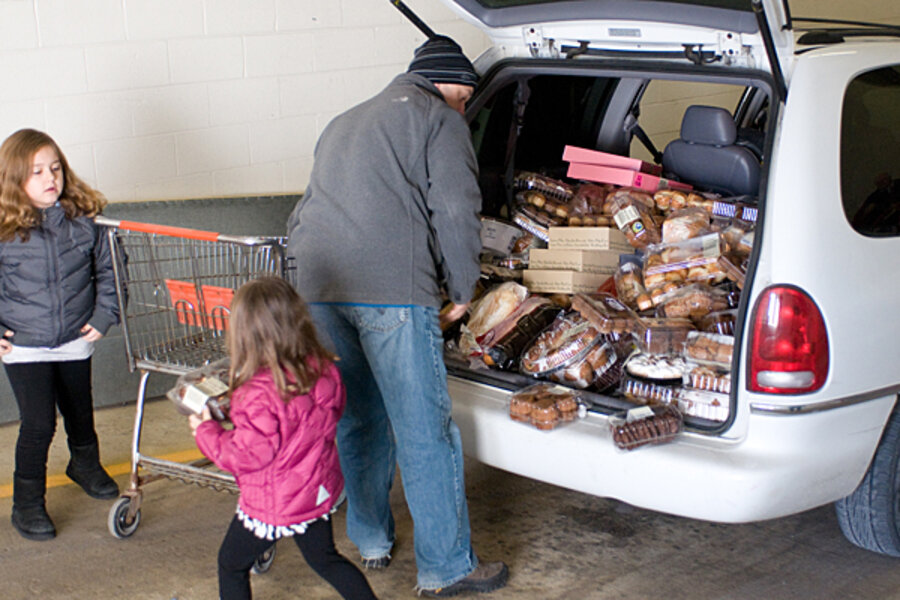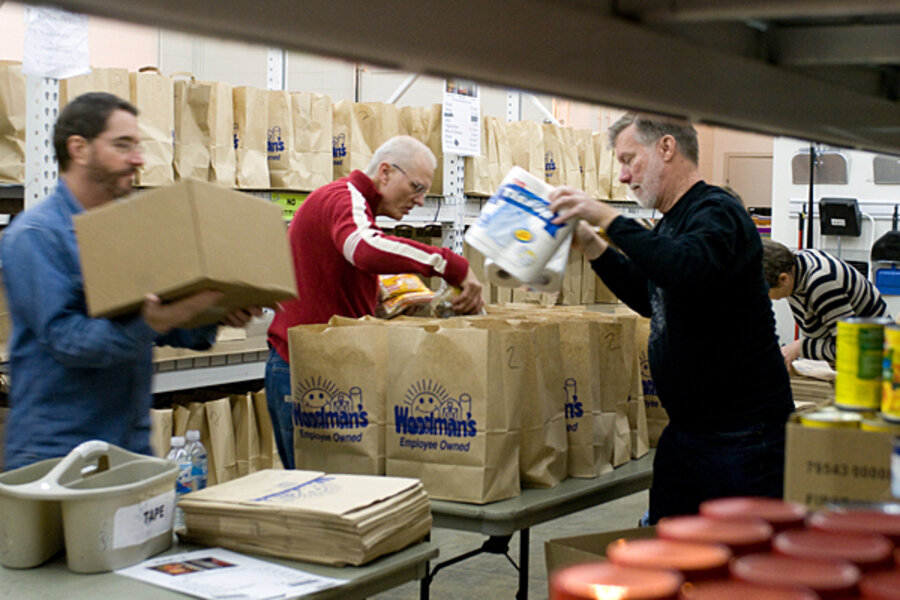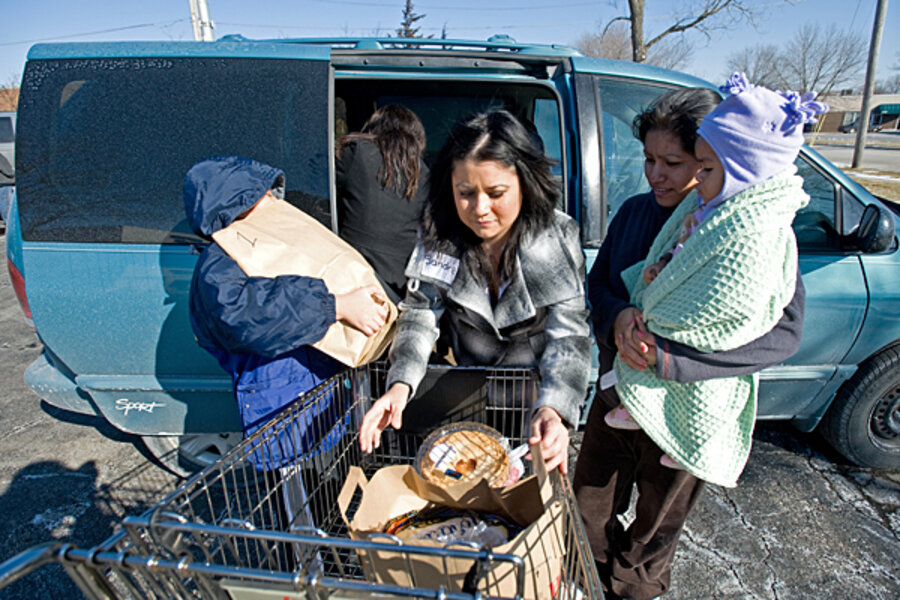Suburbs: The new face of America's poor?
Loading...
| Chicago
David Knox sits at a suburban Chicago food pantry, scanning local headlines that seem less dire than those that might sum up his own life at the moment: His home is in foreclosure. He lost his job in September. His wife is on disability after a car accident.
Mr. Knox lines up once a month at a food pantry in Hoffman Estates, a middle-class suburb just a short drive from the biggest mall in the area and the global headquarters of Fortune 500 companies like Motorola, McDonald's, and Kraft Foods. Knox, a computer programmer, used to be part of that prosperous world. But at 53 and with skills he says are rapidly becoming obsolete, he doubts his ability to climb back in.
"I'm older, and in a lot of cases they want to hire younger people," he says.
Knox, once a middle-class suburban homeowner, may be the new face of American poverty. The suburbs – not the inner cities – are now home to the largest and fastest-growing poor population in the US, according to a report by the Brookings Institution in Washington, D.C. The population of poor jumped 15 percent between 2000 and 2008 – reversing the previous decade's gains – but the suburbs saw the biggest increase, climbing by 25 percent. By 2008, according to Brookings, the suburbs were home to one-third of the nation's poor.
Many are first-generation migrants struggling to find low-wage jobs, but others are middle-class professionals fallen from fortune.
Some of the biggest increases in poverty rates came in the Midwest's auto-manufacturing cities and suburbs. Cities such as Chicago saw significant "suburbanization of poverty." By 2008, nearly half of metropolitan Chicago's poor lived in the suburbs around the city, up 9.1 percent from 2000.
Fallout from the housing crisis
The growth in suburban poverty is partly because more people now live in the suburbs, says Elizabeth Kneebone, study author and senior research analyst at the Metropolitan Policy Program at Brookings. The suburban population grew by 12.5 percent between 2000 and 2008, compared with a 3.9 percent increase in cities, indicating an outward shift.
But the housing crisis and the lack of public transit are compounding the problem, she says. Beth Nabors, executive director of Journeys from PADS to HOPE, which operates a network of shelters in Chicago's northwest suburbs, notes that many of her new clients are from affluent communities.
"They are individuals who, through the housing market boom, extended themselves and weren't able to maintain once their mortgages ballooned," Ms. Nabors says. "We have people showing up in some very nice vehicles, but that's the only thing they have."
Because the suburbs have not been accustomed to helping the poor, they lack the services to cope with issues such as homelessness. Emergency and social services, for instance, are traditionally concentrated in urban centers.
That's made things worse, says Brookings's Ms. Kneebone. Now that the suburbs have more poor people than the cities, she says, it's likely that "the safety net hasn't changed to catch up with these trends. So that is a concern – that there are gaps as needs grow in these communities."
Chicago, for one, has seen a big jump in demand at its suburban food banks, according to Kate Maehr, executive director of the Greater Chicago Food Depository, a nonprofit food bank and distribution center. The Food Depository has increased its reach in the suburbs – in places like Hoffman Estates, where the Willow Creek Community Care Center and Food Pantry, which opened in 2003, saw a 62 percent increase in demand over 2008-09.
Social-service agencies that do serve the suburbs find themselves limited by resources because of the recession. Although many say volunteer rates are up, funding has dropped. Nabors says her shelter group's budget has declined by 23 percent, even as it saw a 17 percent increase in meals served and overnight stays last year.
Suburban communities may also lack social coping mechanisms. Residents worried about property values or safety have in the past resisted the establishment of homeless shelters in neighborhood church basements or community centers. But Nabors says the recession is making residents more compassionate.
"People are being forced to change [their] attitude because they're finding their neighbors in that situation, people who they work side by side with or [who] had baby-sat their children," she says.
'I don't judge people anymore'
At the Willow Creek food pantry, part of a community center offering free computer training and counseling, volunteer Kathy Jones recollects how her family sought help there 10 years ago when her husband lost his job at a plastics company. Now she takes particular care of families new to the center, whether it is learning their needs or pushing a shopping cart of groceries to their car.
"I don't judge people anymore," she says. "It can happen to anyone."
As for Knox, he says he hopes to learn new skills for work. He's also trying to persuade his wife to move to Michigan where friends raise their own food. That's good for the body and for the wallet, too, he says.
"I'm trying to focus on how to live very frugally," he says.
---
Follow us on Twitter



